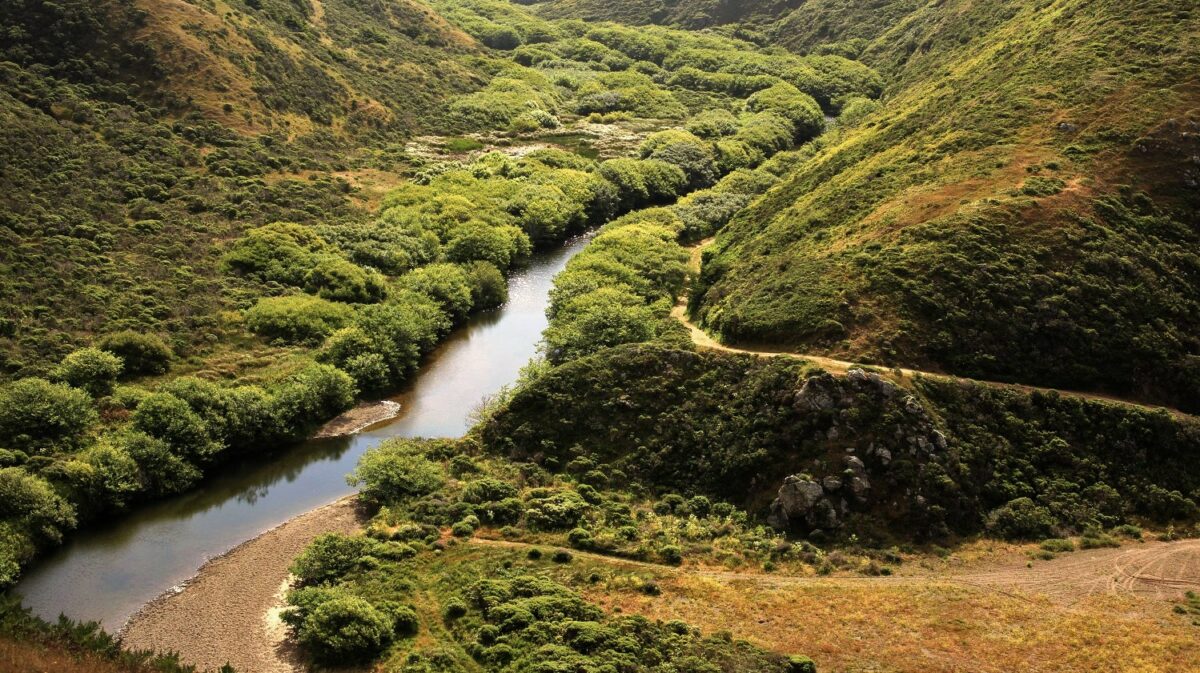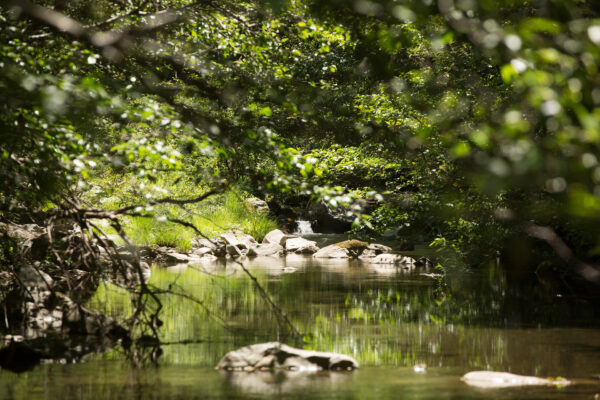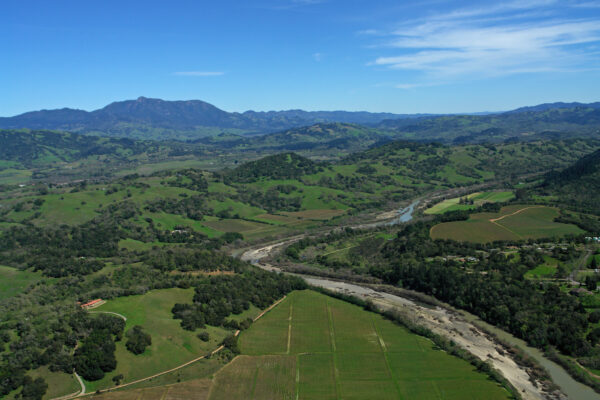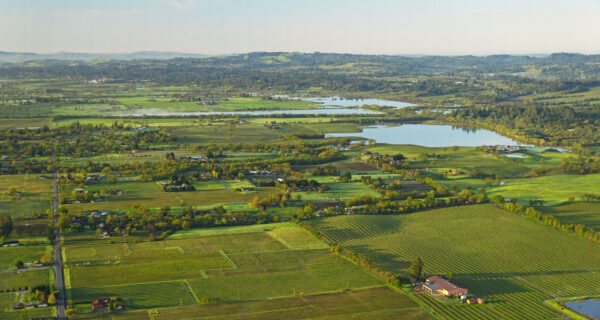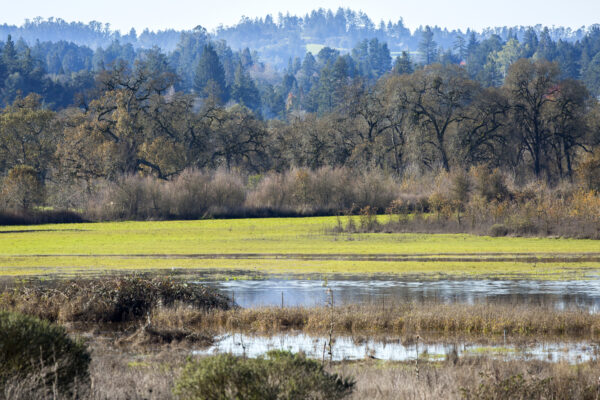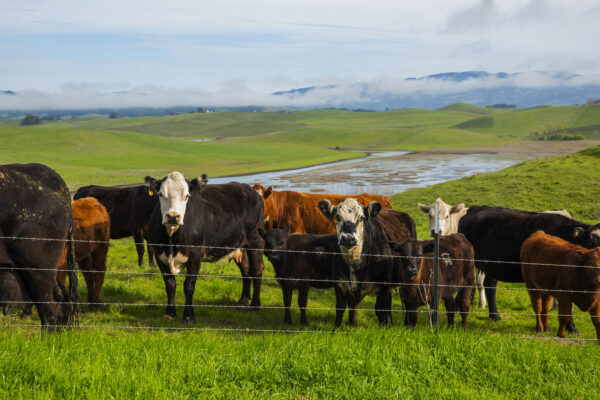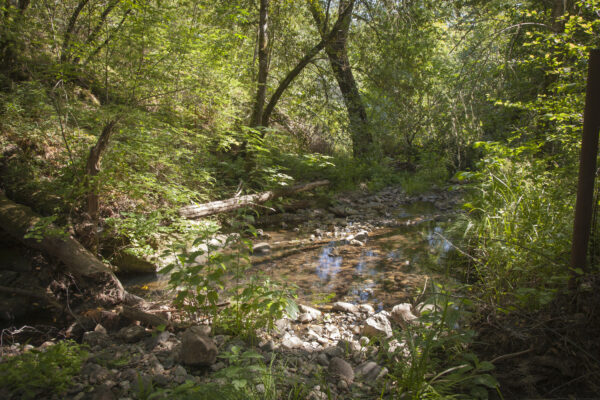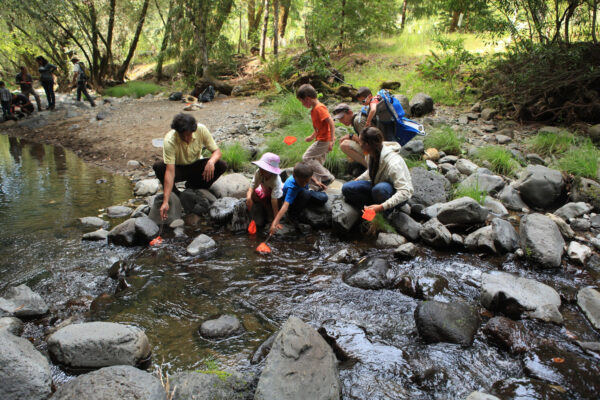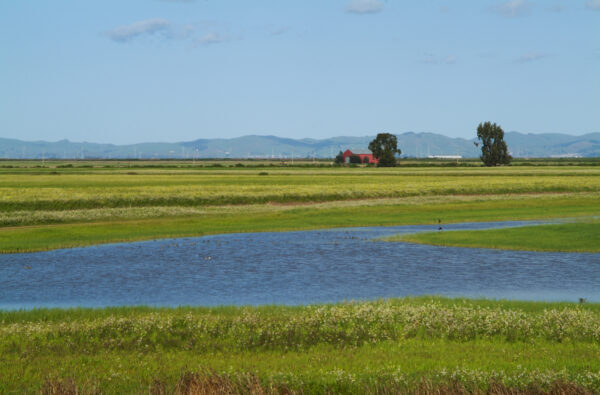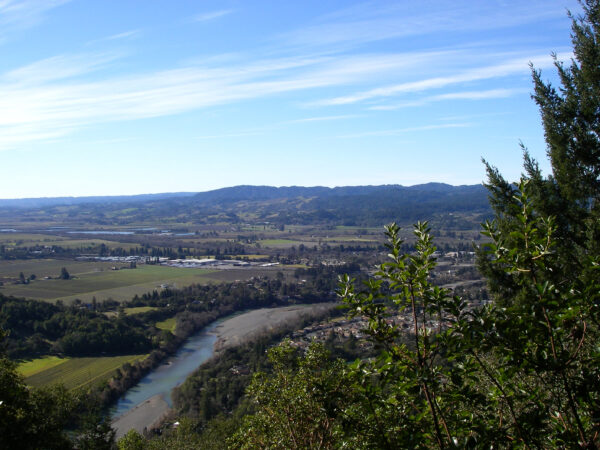Ag + Open Space has launched a new program to expand its conservation efforts to protect – and in some cases enhance and restore – critical streamside and floodplain areas throughout Sonoma County. We are working with private landowners through a voluntary, incentive-based approach to protect creeks and streams with conservation easements. In addition to our core work developing conservation easements on entire properties, we are now piloting a program to develop easements on portions of agricultural properties that are home to streams and riparian habitats.
Learn more about conserving your land with Ag + Open Space >>
Stewarding Your Land
Ag + Open Space recognizes that land conservation is one part of the solution to sustaining healthy watersheds and a thriving agricultural community, and that ongoing land management is critical to the long-term health of our natural and working lands. To support landowners in stewarding their streamside lands, we’ve worked with the Sonoma and Gold Ridge Resource Conservation Districts to offer the following resources:
Find your Resource Conservation District + learn more
First, visit the maps below to assess which District works in your area:
Then, follow the links below to peruse their resources about fire mitigation, nutrient management, water stewardship, drought resilience, and more:
Sonoma Resource Conservation District >>
See the Resources tab in the upper right-hand corner
Gold Ridge Resource Conservation District >>
See the Resources tab in the upper right-hand corner
Learn more about your local Resource Conservation District
The Sonoma and Gold Ridge RCDs are local, non-regulatory, special districts that provide conservation assistance to public and private landowners, land managers, and the greater community to drive conservation solutions that address our most pressing natural resource issues. In existence since the 1940s, RCDs are local grassroots conservation delivery systems that guide natural resource solutions on a voluntary basis. The RCDs do this work by making available technical, financial, and educational resources, and focusing those resources to achieve the greatest benefit to our community, soil, water, fish, and wildlife resources. Working collaboratively with agencies, non-profits, and diverse community groups the RCDs are committed to utilizing cooperative and scientifically sound methods to ensure the natural resources within agricultural systems, rural and urban areas, and natural lands are conserved, restored, and protected.
Their diverse staff – including a Registered Professional Forester, engineers, agricultural conservation planners, geomorphologists, ecologists, outreach specialists, project managers and administrative staff – have successfully secured tens of millions of dollars in local, state, and federal funds to develop, plan, and implement on-the-ground natural resource conservation solutions in partnership with landowners and managers.
More Watershed Resources
The Slow it. Spread it. Sink it. Store it! Guidebook provides straightforward best management practices that can help to protect and replenish surface water and groundwater resources, offset groundwater use, reduce erosion and pollution, while providing many other benefits.
Groundwork is a handbook for small scale erosion control in coastal California with detailed information on how to manage soil, erosion, and sediment on private properties and from roads and construction and grazing.
Tending the Edges: The Benefits of Hedgerows on Bay Area Working Lands illuminates some of the benefits of hedgerow plantings, describes related conservation practices, and provides resources for land stewards to get started planting.
The Russian River Stewardship Guide, created by the Sonoma, Gold Ridge, and Mendocino County RCDs, provides an overview of the diverse Russian River Watershed, and offers a host of resources to assist with stewardship of creekside properties throughout the Watershed.
The Grazing Handbook is for public agency personnel and private landowners who may use livestock grazing to further their resource management goals, and includes considerations for grazing in riparian areas.
For more resources focused on landowner funding, assistance, and training programs, as well as resources related to agriculture, drought, wildfire, forestry, invasive plant management, erosion control, and wildlife, visit Ag + Open Space’s Landowner Resources page>>
